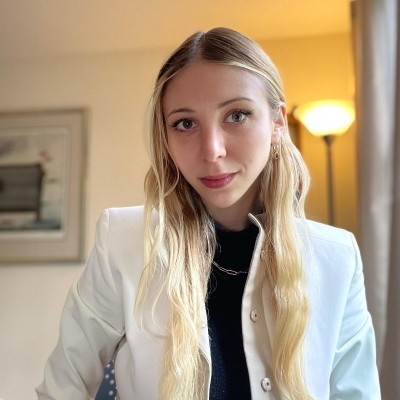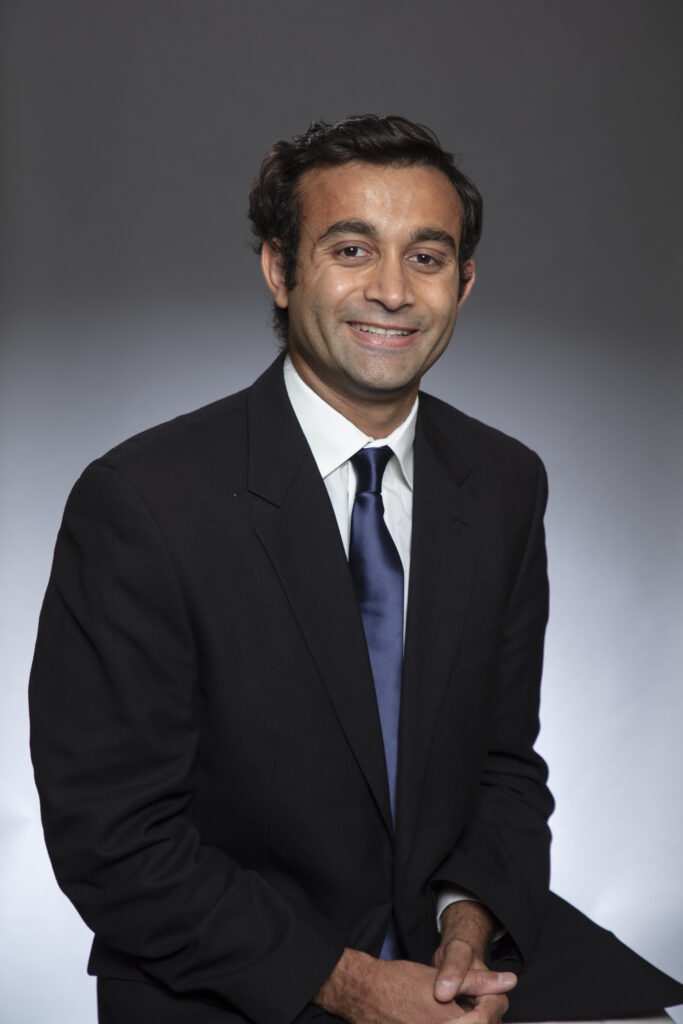In the Age of “Make America Healthy Again,” Universities Must Lead the Charge Against Health Misinformation
It was a Tuesday morning on the Caltrain. A young woman sat across from me with her toddler, balancing a juice box in one hand and a phone in the other. Her voice carried.
“They’re saying fluoride might be toxic, and now they’re saying antidepressants might be bad for kids,” she said. Then, after a pause: “You just don’t know who to trust anymore.”
Her words were not shocking. They are all too common now. That morning in May 2025, she was reacting to headlines from a federal report released by Health Secretary Robert F. Kennedy Jr., titled “Making Our Children Healthy Again,” created under Executive Order 14212 signed by President Donald Trump in February 2025, a mere 25 days after his inauguration. The 72-page report reads more like a manifesto than a scientific consensus. It cites a wide range of factors—from artificial food dyes and antidepressants to long-standing public health practices like childhood vaccination—for a so-called “chronic disease crisis” in kids. It calls the healthcare system “overmedicalized” and implies that children are being harmed more by medical care than by illness itself.
Several experts have questioned the way the report was created. Early reporting from the news site NOTUS demonstrated that some citations within the report did not actually exist, and additional reporting from The New York Times found that other citations had errors in naming the appropriate authors. While the report does mention real public health concerns—such as increasing physical activity, reducing ultra-processed foods, and addressing sleep deprivation—these factual inaccuracies raise questions about the validity of the entire report itself and whether the cited sources truly substantiate the claims the report makes.
This is not fringe misinformation. Rather, it is institutionalized and comes from the top. It is no wonder Americans do not know who to trust. And the influence of that institutionalization deepens each week. On June 10, RFK dismissed all 17 members of the Centers for Disease Control and Prevention’s (CDC’s) vaccine advisory panel—an unprecedented move. He has since named replacements, some of whom are affiliated with anti-vaccine organizations or have publicly questioned the safety of widely accepted immunizations. Public health experts have voiced alarm, warning that such changes could erode confidence in vaccines, hinder access to lifesaving shots for low-income children, and shift federal immunization guidance away from decades of evidence-based consensus.
This pattern of sowing doubt isn’t limited to vaccines. Let’s break down the other aspects of the report.
Consider fluoride: for more than 70 years, it has been one of the most effective, equitable public health interventions. The CDC has called it one of the “Ten Great Public Health Achievements of the 20th Century,” a citation that the report itself includes. This alarmist tone has contributed to legislative efforts in states like Utah and Florida to eliminate fluoride from public water supplies, despite decades of scientific evidence supporting its benefits.
What about vaccines? The report calls for “larger clinical trials” on childhood immunizations, echoing thoroughly disproven anti-vaccine rhetoric. Selective serotonin reuptake inhibitors (SSRIs), which are U.S. Food and Drug Administration (FDA)-approved and widely considered a lifeline for teens facing mental illness, are called into question. Even ultra-processed foods—(yes, a valid public health concern)—are used to stoke fear, advocating for sweeping ingredient bans before full regulatory review.
In moments like this, science needs a translator—someone who can cut through the noise and help people like that mom on the train make sense of the headlines. Her concern was not reckless; it came from a place of love and a desire to protect her child, just like any parent. But when misinformation clouds even our best intentions, the consequences can ripple widely. That is why universities must step up—not just as producers of knowledge, but as trusted guides who can bridge the gap between science and the public.
Universities are uniquely positioned to lead this work. They house researchers, clinicians, students, and public outreach efforts under one roof. They serve as sanctuaries for honest inquiry and fearless discourse. Unlike political institutions, whose agendas may shift with the winds of power, universities are grounded in the enduring principles of critical thinking, peer review, and intellectual independence. But the perception of academia as an “ivory tower”—a place detached from the realities of everyday life—remains a barrier. The term suggests an elite world where knowledge is kept out of reach, disconnected from the public it is meant to serve. To counter this, universities must not only produce knowledge but also deliver it.
Many universities are also affiliated with hospitals, where patients are often admitted for advanced care. Hospitalists—who now make up the largest group of inpatient physicians in the U.S.—encounter this uncertainty every day, reflected in the concerned voices of their patients. They admit patients with diabetic ketoacidosis when insulin regimens are abandoned due to mistrust. They witness firsthand the surges in RSV, influenza, and measles in communities with declining vaccination rates. While emotionally taxing, these moments also offer opportunities to educate. Hospitalists, attuned to their community’s concerns, can use a patient’s hospital stay to correct misinformation and help restore faith in science.
Why does this matter now? Each day, new headlines stir confusion—and that is understandable. It is okay for public health guidance to change as we learn more; in fact, that is how science is supposed to work. We saw this clearly during the early stages of COVID-19, when evolving data shaped everything from masking to vaccines. However, this moment feels different. The confusion is not just a byproduct of new evidence—it is being fueled by politicized messaging, incomplete reporting, and coordinated efforts to erode public trust in science itself. For the average person trying to make informed choices, it is harder than ever to tell whether a headline reflects genuine progress or manufactured doubt.
This is where universities and hospitalists should step in. Imagine a simple, accessible explainer video from universities such as Johns Hopkins or Harvard outlining what changed and why. Not a lecture, just clear, visual, data-informed guidance. Imagine if this guidance could be linked in each patient’s discharge summary as a way for them to put their health in the broader context of the domestic healthcare landscape. That is health literacy in action.
At Stanford’s recent Academic Council meeting, President Jonathan Levin reminded the community that universities are not just “homes for curiosity,” but “sources of innovation for the country and world.” That role carries weight. And in today’s climate, it comes with responsibility.
Universities already have a powerful asset in this fight: their name. Hospitalists and researchers carrying a Harvard or Yale title often carry inherent trust before they even speak. This is because, historically, these institutions have been seen as leaders of truth and progress. Their faculty often lead landmark studies, influence global health guidelines, and provide expert commentary during crises- so why stop now?
We cannot expect the public to decode technical jargon or sift through PubMed abstracts. We need scientists and hospitalists trained to speak plainly and compassionately, showing up in digital spaces and patient rooms where trust is won or lost in seconds.
We can no longer afford to let research hide behind paywalls or remain confined to elite journals. We need to bring it forward: make it visual, relatable, and proactive. We need faculty, students, and hospitalists trained not only in discovery but in communication.
Imagine if every research center had a rapid-response communication team, or if medical students and residents were taught not just how to interpret studies, but how to explain them to a parent, a patient, or a policymaker, adapting their language and communication style to meet people where they are at. Imagine if university newsletters reached not just funders and peers, but communities struggling to navigate a landscape of misinformation.
We have seen glimmers of this. During COVID-19, universities launched dashboards, webinars, and social media explainers that reached millions. But they were mostly temporary to stabilize the uncertainty brought forth by the pandemic caused by a virus. However, now, we are in the midst of a pandemic of confusion—one that demands a response as coordinated as our efforts against COVID-19.
Now, as health misinformation becomes entangled with public policy, universities must step forward with clarity and urgency. As public figures cast doubt on long-standing health guidance, the role of academic institutions has never been more critical. If we do not lead with evidence, empathy, and effective communication, we risk allowing misinformation to fill the vacuum—undermining public trust, backtracking on years of medical knowledge progress, and weakening the foundation of truth.
To the mom on the train, and to the millions asking who to believe: you deserve better. You deserve facts without fear. You deserve science that shows up—not just in labs, but in your feed, your clinic, your community.
If we want to make America healthy again, we must first make science understandable again.

Ms. Handler
Ms. Handler is a public health professional with a background in epidemiology and science communication. She is the science communications strategy manager at Stanford University’s department of medicine, in Stanford, Calif., where she helps shape how scientific and clinical discoveries are shared across research, education, and patient care.

Dr. Juthani
Dr. Juthani is PGY-3 in internal medicine, incoming clinical assistant professor in the division of hospital medicine, at Stanford University, in Stanford, Calif.